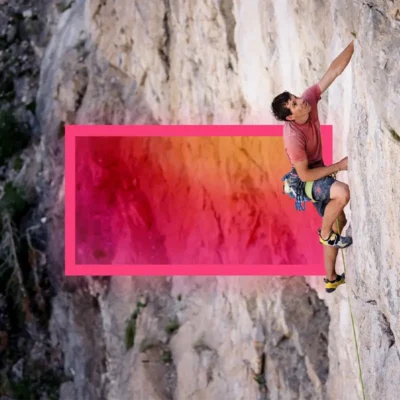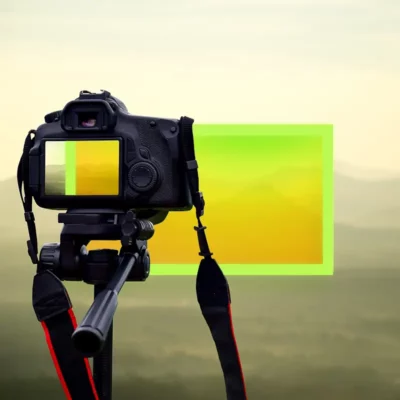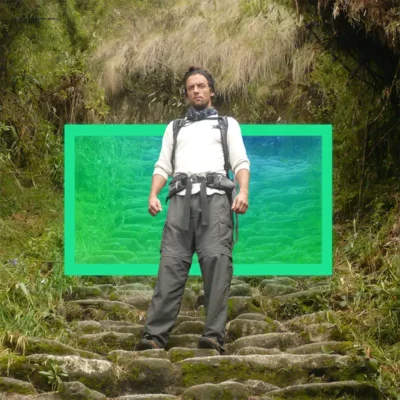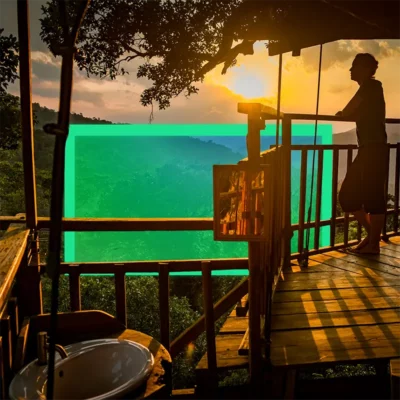Let the symphony of life unfold all around you
Matthieu Ricard, photographer, humanitarian, and author of Notebooks Of A Wandering Monk, has spent years of his life in the presence of some of the world’s greatest mindfulness practitioners and felt the weight of their powerful compassion. In this episode, Matthieu shares how he learned to stop trying to analyze or understand this power, and instead let his mind experience and absorb it.
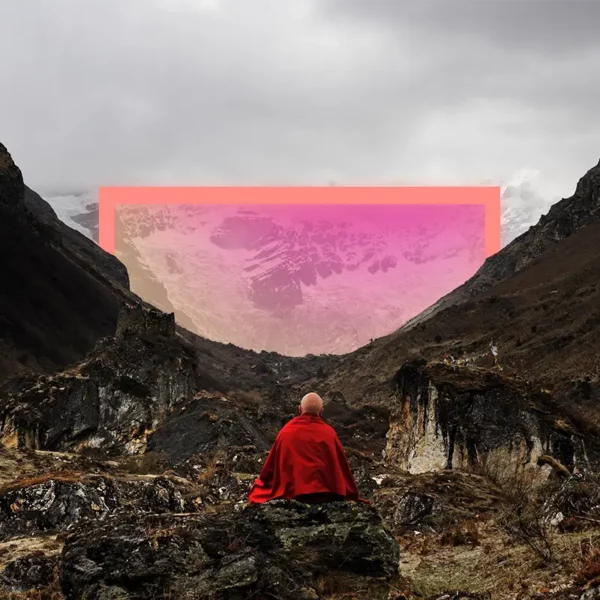
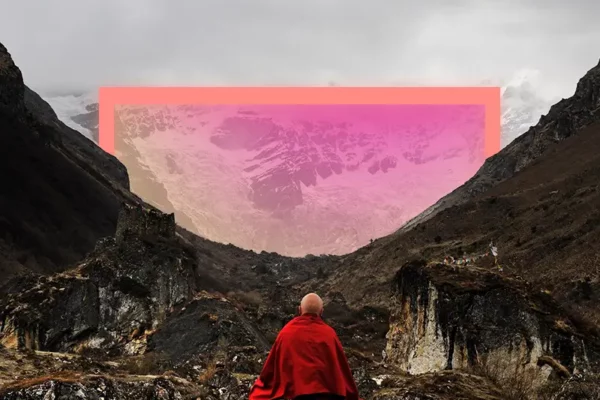
Table of Contents:
Transcript:
Let the symphony of life unfold all around you
MATTHIEU RICARD: He sits against the window on a small wooden bench. His presence is something formidable. Like a mountain. Not a mountain that is crushing you. But a mountain of wisdom and compassion. This is the person I’ve traveled all this way for. And I feel a deep longing to immerse myself in his presence.
ROHAN GUNATILLAKE: In his life, renowned humanitarian and Buddhist monk, Matthieu Ricard, has had the unique privilege of sitting at the feet of the world’s most esteemed spiritual leaders, many of which he describes in his memoir, Notebooks of a Wandering Monk. The mere presence of these great masters can feel overwhelming, but, as Matthieu shares in the story of meeting his first teacher, it is best to not analyze or try to understand these powerful moments. Instead, we must experience them and attune ourselves to their energy.
In this series, we combine immersive first-person stories, breathtaking music, and mindfulness prompts so that we may see our lives reflected back to us in other people’s stories. And that can lead to improvements in our own inner lives.
From WaitWhat, this is Meditative Story. I’m Rohan, and I’ll be your guide.
The body relaxed. The body breathing. Your senses open, your mind open, meeting the world.
RICARD: I climb the creaky wooden steps, one at a time, and finally reach the fifth floor. The door opens and I step into the apartment. It is a modern bourgeois family apartment. Quite luminous, with big rooms. A projector sits in the middle of the living room, spooled with 16-millimeter film. Along the walls of the apartment are framed photos taken all over the world. Photos of teachers and villages in the Far East.
These photos were taken by my mother’s friend, Arnaud Desjardins, who lives in this apartment with his wife Denise and their children. We’re in the Quartier Latin in Paris, the heart of the city. Only a few blocks from the Sorbonne and the Jardin du Luxembourg. It is 1967. And I’m 20 years old.
Arnaud and his wife have just returned from Northern India, where they spent six months making a documentary. They have a rough cut of the footage and want to show it to us tonight. It is called The Message of the Tibetans. Sonam Kazi, the interpreter sent by the Dalai Lama to help Arnaud during his journey through India, is also present.
Arnaud is a television producer with a deep interest in Eastern philosophy and religion.
Since I was a child, I’ve been exposed to extraordinary people. My father is a renowned philosopher. My mother is an abstract painter. Our family apartment on Rue de la Tour is regularly filled with mathematicians, musicians, and artists. At 16, I have lunch with Igor Stravinsky. Can you imagine?
Eventually, my own intellectual adventure begins. I become interested in astronomy, biology, bird watching and photography. I also do research, along winners of the Nobel Prize in Medicine. But even at a young age, I am struck by the fact that there seems to be no correlation between their skills, their genius, and being a good human being.
One would think that being intelligent, creative, and knowledgeable would lead to some sort of goodness or happiness. But this is not necessarily the case. Some philosophers are friendly and kind. Others are quite miserable and selfish. And the same is true with scientists, artists, gardeners, teachers.
One day, a friend of my father asks me, who is my role model? I suddenly realize that I have no answer. I can think of no one that inspires me in that way. I know I don’t want a boring, meaningless life. I feel that human beings harbor much more potential than that. But I’m incapable of finding words for the life I do want.
Back in Arnaud’s apartment, he introduces the documentary. I sit in a chair, facing a small projector screen, about 2 meters by 1.5 meters. The lights are dimmed. The rhythmic, soft, steady clicking of the projector starts. On the screen, I see Tibetan refugees in the village where they have settled high up in the Indian side of the Himalayas. Buddhist teachers meditate, teach their students, or perform ceremonies. Go about their daily lives in exile.
But at the end of the film, something remarkable happens. There are a series of close up shots of…faces. Faces of great teachers, simple hermits in their hermitages, some teachers of the Dalai Lama himself. There is no music, no speaking. Just silent, looking straight at the camera.
Their physical and spiritual presence is striking. Some are quite skinny. Some are portly. Some are old. Some young. They don’t match the criteria for Hollywood beauty. But they all share this deep and impressive gaze. I immediately feel the measureless dimension of their wisdom and compassion, of their inner realization.
A feeling of wonderment and awe surge from the depth of my heart.
I know very little about Buddhism at that time. There is not much that has been translated into French. But I know that what I’m seeing in these faces is something special. Something so different from the intellectuals here in Paris. I feel as though I’m seeing Socrates or Saint Francis of Assisi… alive… today.
These two minutes of film leave an unbelievable impression on me. I am filled with the aspiration to go to this place and meet these teachers. I want to meet such remarkable human beings and experience the quality of their presence for myself.
The train station in Delhi is like a whole world. The platform is full of people. People sleeping, people selling things to eat out of carts and large baskets. Porters run up and down carrying luggage, as loud announcements in Hindi play over a speaker system. I can’t understand the words, but I get the impression it’s about the trains being late. The trains are always late.
I’m sweating a lot. June is the hottest time to visit this part of India. It is 110 degrees in the shade. I just arrived a few days ago with very little money. Just my rucksack on my shoulder. And I decide to walk from the center of the city, where the airport bus left me to the home of a family friend where I will be staying. I take little breaks in the shade and try to ask for directions. But I don’t speak Hindi. I barely speak any English. Somehow, I manage to get myself understood.
Now, I board my train for Darjeeling, a town far to the east, near the border of Sikkim. I go there to meet one of the Tibetan masters featured in Arnaud’s film, whom Arnaud had found particularly impressive. His name is Kangyur Rinpoche.
When I finally find my train, I climb into the third class compartment. The corridor is packed with people having loud conversations about politics and who knows what else. I find my seat, which is a simple wooden bench. I watch as a man pulls out his bedding and chains up his luggage. A couple with children take out a small stove and start cooking right there on the train.
As the engine pulls out of the station, a man begins walking up and down the aisles, taking lunch orders. There are literally hundreds of people here and he writes down what each of us wants. Chapati. Dal. Rice. I’m thinking, ‘What is going on? Where will he get this food?’
I find out that these orders are telegraphed to a station three hours ahead of us. When we arrive at the station, a man gets in our wagon with a huge stack of aluminum plates. He brings me exactly what I ordered. Steam rises off the rice and curried lentils. The smell of spices fills the air. It’s delicious.
For two days and three nights, I travel like this. The train moves quite slowly. I watch the Indian countryside pass through the window. Rice paddy fields inundated with water. Farmers plowing the fresh dirt. So many birds. I try to identify as many as I can.
At night, we sleep in stacked bunks. It is supposed to be one person per bed. But that’s not always the case. If you sleep on the bottom, you often have someone sitting at your feet.
Every time we reach a major station, people get off the train and eat a little something on the platform. We stop a lot, so there is a constant movement of up and down, in and out. People don’t get back until the train starts moving. But there’s no panic. They just grab hold and climb on.
The atmosphere is intense. I often just guess what’s going on. There is so much activity. A constant onslaught of sounds, smells, and sights. To some, it may be overwhelming. But I am so happy to be on my way to Darjeeling and savor every instant of these new experiences. I just take it all in, without commentary. India has so many impressions. There’s no space left for anything else. I simply let this symphony unfold, all around me.
GUNATILLAKE: We don’t need to be in exotic surroundings to do this. What symphony of experience is here for us right now? Let’s listen, letting everything happen. Listen to this unfolding.
RICARD: The Land Rover stops a few miles outside the village of Lebong, just north of Darjeeling. I climb out and step down onto the dark, muddy dirt. It is raining a little. Japanese cedars rise up all around us. Next to me, the eldest son of the Tibetan master, Kangyur Rinpoche. We met earlier today at the market in Darjeeling, and he is guiding me to his father’s home. He points up ahead, and I see five or six houses up the hill. Together, we begin to climb the slippery stone steps, one at a time.
When we reach the top, there is a small alley with three houses in a row. Above the wooden door of the first, is a banner of colored cloth. Yellow, green, red, white, and blue. This means the family who lives here is Tibetan.
I pass through the low doorway, down a few wooden steps into the kitchen. It’s quite dark. There is a woman standing off to the side — Kangyur Rinpoche’s wife. One of her daughters stands beside her.
I only half-see their smiling faces. My mind is entirely focused on the encounter I’ve been waiting for. The reason I traveled all the way to India is sitting in the next room. Time feels suspended, laden with infinite possibilities.
Péma guides me to a doorway separated by a colorful curtain. I push it aside and see a very small room. It is dimly lit by one lightbulb. All around the walls, from floor to ceiling, are boxes wrapped in leather. I will learn later that these contain dozens and dozens of precious Buddhists texts, brought over from Tibet.
There are two windows. One window leads back to the alley, so there is no light coming through. The other opens up to the mountains. In the distance, Kangchenjunga, a towering, 24,000 foot peak, is shrouded in the mist of a monsoon.
Kangyur Rinpoche sits against the window, on a small wooden bench covered with a Tibetan rug. I can just see his silhouette, but I immediately feel an immense amount of… deference. His presence is something formidable. Like a mountain. Not a mountain that is crushing you. But a mountain of wisdom and compassion. This is the person I’ve traveled all this way for. And I feel a deep longing to immerse myself in his presence.
I lay on his table…the basket of fruits I have brought as a modest offering. He welcomes me with a warm smile. I sit in front of him on the wooden floor of the small room. Kangyur Rinpoche is in his seventies. The light from the window shines through his short gray hair. His eyes shine with vivacity in the semi dark room. He exudes a peaceful and benevolent strength, and his mere presence creates an aura of calm that I had never felt before. It is as if every object, every moment, is pervaded by the master’s inner peace. The only sound is the rustling of the mala beads, a Buddhist rosary that slowly slid between his fingers.
Sitting before him now, I feel like a traveler who has finally reached the destination after a long journey. I sense that the most precious part of my life is now beginning. A new journey that will take me step by step to inner freedom, to progressing from confusion to clarity, from the small space of my limited, confused mind, to the vast open space of my master’s enlightened mind. A vast open field of possibility now lays before me for many years to come. I feel like discovering a new beautiful valley, after crossing a mountain pass.
Now that I am here, I realize…I don’t have much to say, but so much to experience. We don’t speak a common language anyway, and can only exchange a few words, through his son or daughter. Tibetan teachers are used to people coming from all over, seeking guidance. So it is not surprising to Kangyur Rinpoche that someone like me would show up at his doorstep. But his teachings are more to do with the quality of his presence than with words.
He does his prayers silently. Sometimes he reads from a book. Sometimes he handles his rosary. Sometimes he just gazes at the space in front of him. And I sit there on the floor about two meters away. Observing. The mind that analyzes, naturally quiets down. I simply sit there, trying in my naïve ways to blend my mind with his, and rest in that state beyond words.
How can I express what I feel in this moment? There is nothing like sparks of lights or vibrations. It is very simple, profoundly simple. And yet, very powerful. It is like rising out of the clouds into the blue, luminous sky, or getting to an incredibly fertile plane. An almost inexhaustible field of exploration and inner enrichment.
I do not doubt the qualities I see in Kangyur Rinpoche. When you see Mount Everest, you don’t doubt its existence. You only doubt your ability to climb it. Right now, I don’t know if I am diligent enough or skilled enough to travel the entire path that brings about such qualities. But I feel that walking in that right direction is the best thing I can do from now on.
I stay in this room with the one I now consider as my teacher for three weeks. I sleep on the floor. I drink tea and eat food provided by his family. There is no other place I would like to be.
What I see in Kangyur Rinpoche is far beyond my expectations in coming to India. The quality of his presence is so obvious. It tells the whole story. There is no point in me trying to understand or analyze conceptually. This is not a philosophical treatise or some great scientific puzzle to be solved. There is no point trying to formulate it in intellectual concepts. I just receive it and let it permeate my heart and mind.
GUNATILLAKE: This is a type of knowing, one beyond concepts, beyond description in words, maybe. Let’s just allow that to sink in. Just how Matthieu is doing, sinking into his teacher’s presence.
RICARD: In the years after my first meeting with my teacher, I take seven round trip flights between India and France. Every summer, I return to Darjeeling to meet him. At home, I continue with my research at Pasteur Institute, and begin to practice the instructions Kangyur Rinpoche gave me.
In late 1972, having completed my Ph.D, I finally take a one-way ticket to go to live near Kangyur Rinpoche, and begin my retreats in my first hermitage. I would stay there for seven years.
I spend part of every day with Kangyur Rinpoche, sitting in his presence to meditate. He is now living in an old British colonial house transformed into a small monastery. Only five or six rooms and a garden. Above us is an extra floor with a temple and a library.
It takes only a month to build my wooden hermitage. It is seven by ten feet and has no running water or electricity. But I remember these years as some of the happiest and most fortunate in my life.
My teacher accompanies me step by step on this journey. Days become months, months become years, time flows on.
It is now 1975. Q few close disciples sit together on the floor of Kangyur Rinpoche’s room upstairs in the monastery. He has fallen ill and tells his loved ones that he will soon be leaving this life. At sunset on January 23, he asks to be alone, and leaves this world, sitting in meditation.
Although there is unfathomable sadness in this moment, people are not crying or shouting or running around. Everyone is getting into very intense practice. A few days later, his close students have the precious opportunity to pay homage to his body and to sit in the room for a while, every day. I experience these very unique moments — my last in the presence of my teacher’s physical body — with deep intensity. I pledge, with greater resolve than ever, to devote myself to practicing the teachings that I have received from him.
The departure of a spiritual teacher is as if the sun suddenly disappears from the sky. Yet, although my teacher is no longer confined to his physical body, I feel him everywhere. In my thoughts, in everything I see or hear, he is present in my life more than ever. That is the power of the connection between disciple and teacher. He is one with the fundamental nature of my mind.
I have always taken great joy in studying and practicing. Of course, we may encounter obstacles. We can go astray in our meditation, grow weary, become jaded by the teachings, or succumb to distraction. Hence the importance of a qualified guide, who can put things back in their proper place.
And if we are lucky enough to be in the presence of someone with such qualities, we may find it difficult to put words to what we are feeling. So why try? We do not need words. We do not need to analyze or even comprehend. The quality of the presence is self-evident. It is best to just experience it, let it permeate your mind, and become a part of you.
Ultimately, it is up to each practitioner to actualize the Buddha nature dwelling within each of us.
Rohan’s closing meditation
GUNATILLAKE: Thank you, Matthieu.
Matthieu… well, he is a bit of a hero of mine. A teacher with the ability to communicate with all kinds of people, and to represent the deepest and most hard-earned wisdom, in ways that we can actually understand and put into practice. It’s super rare. The rarest of the rare.
So, it’s a great honor to invite you into a mini-meditation to close out Matthieu’s episode. And the theme, of course, that I want us to explore, is that of presence.
First, let’s establish our own. We can do this by bringing our awareness into the body. Soaking our attention into the body, our sense of contact. Our body an anchor.
Establishing our presence by being present.
Just like this.
Just this.
Simple presence.
When Matthieu described his teacher, it was clear that they were an extraordinary human.
I’m curious… who is the person in your life, who had or has a presence that most struck you?
Take this opportunity to bring them here, through your memory, feeling into what it was like to be around them.
What was their magnetism, their energy like? Can you feel it now?
Some say, our presence is a tangible expression of how much we are in flow with everything around us. Others say that presence is the ease that comes with wisdom. Others still say that it’s love… love being transmitted.
Whichever definition of these you like, or indeed, one of your own, let’s practice it.
Let’s be in flow with everything.
Let’s show, show how at ease we are with the world.
Let’s transmit love.
Prescencing.
Presencing in whatever way we can.
In whatever way feels right and natural.
Thank you again Matthieu.
And thank you. Be well.We’d love to hear your personal reflections from Matthieu’s episode. How did you relate to his story? You can find us on all your social media platforms through our handle @MeditativeStory, or you can email us at: [email protected].


